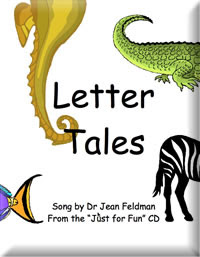Well, sometimes you are happy, and sometimes you are not - and that's O.K.!! Helping children identify different feelings and deal with emotions in an acceptable way is part of the "hidden curriculum" that teachers deal with daily. Let's get started with a few new verses to a song everyone knows.
If You’re Happy and You Know It (Traditional tune)
If you’re happy and you know it, clap your hands.
(Clap twice.)
If you’re happy and you know it, clap your hands.
(Clap twice.)
If you’re happy and you know it,
Then your face will surely show it. (Smile.)
If you’re happy and you know it, clap your hands.
(Clap twice.)
If you’re sad and you know it cry your eyes… (Rub eyes.)
If you’re mad and you know it stomp your feet… (Stomp feet.)
If you’re scared and you know it shiver and shake…
(Wrap arms and shake.)
If you’re surprised and you know it say, “Oh, my!”…
(Open eyes wide.)
*Let children suggest other emotions and movements.
If you’re happy and you know it, clap your hands.
(Clap twice.)
If you’re happy and you know it, clap your hands.
(Clap twice.)
If you’re happy and you know it,
Then your face will surely show it. (Smile.)
If you’re happy and you know it, clap your hands.
(Clap twice.)
If you’re sad and you know it cry your eyes… (Rub eyes.)
If you’re mad and you know it stomp your feet… (Stomp feet.)
If you’re scared and you know it shiver and shake…
(Wrap arms and shake.)
If you’re surprised and you know it say, “Oh, my!”…
(Open eyes wide.)
*Let children suggest other emotions and movements.
*Discuss what causes different emotions and appropriate responses. What makes you happy? What can you do when you’re happy? What makes you stressed? What can you do when you’re stressed?
*Learn sign language for the different feelings and practice them as you sing the song.
Collaborative Books - Make class books such as “Things to Be Happy About,” “Things that Bug Us,” or “Scary Things.”
Connections with Characters - As you read books to the class, encourage students to describe how characters are feeling. Have they ever felt like that?
Collaborative Books - Make class books such as “Things to Be Happy About,” “Things that Bug Us,” or “Scary Things.”
Connections with Characters - As you read books to the class, encourage students to describe how characters are feeling. Have they ever felt like that?
Vocabulary - Extend vocabulary by brainstorming different ways to say “happy,” “sad,” “angry,” “surprised,” etc. Draw expressions on paper plates and put them on a bulletin board. Write different synonyms for each emotion underneath.

Dramatize - Let children pantomime different feelings as friends try and guess what they are.
Here are patterns for the expression puppets:
https://drive.google.com/file/d/0B1SnEagA4jljQjJ5S3F5TUl4aW8/view?usp=sharing
Role Play - Divide children into small groups and let them make their own expression puppets. Encourage them to role play different scenarios with their puppets.

Dramatize - Let children pantomime different feelings as friends try and guess what they are.
Here are patterns for the expression puppets:
https://drive.google.com/file/d/0B1SnEagA4jljQjJ5S3F5TUl4aW8/view?usp=sharing
Role Play - Divide children into small groups and let them make their own expression puppets. Encourage them to role play different scenarios with their puppets.












































